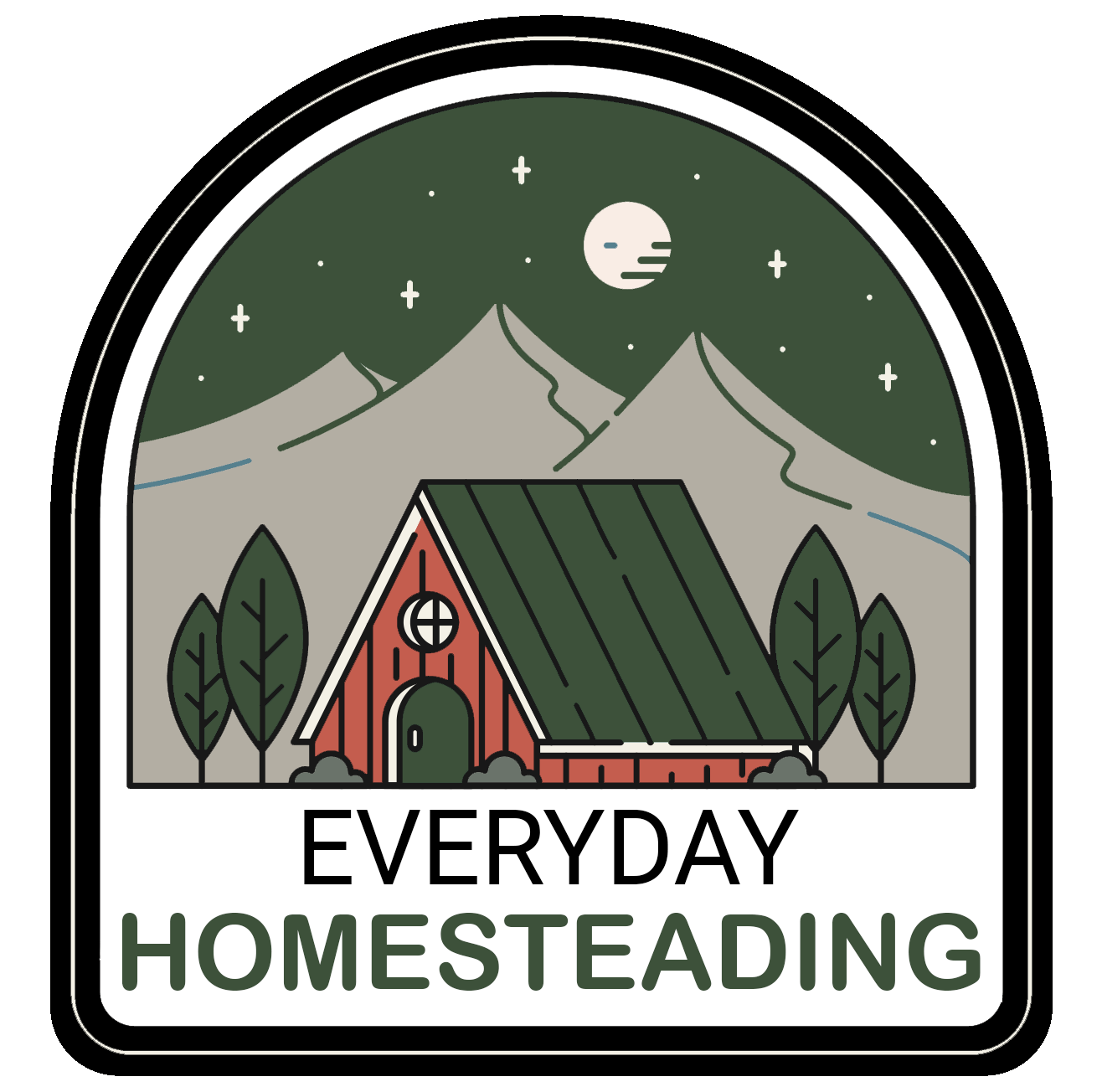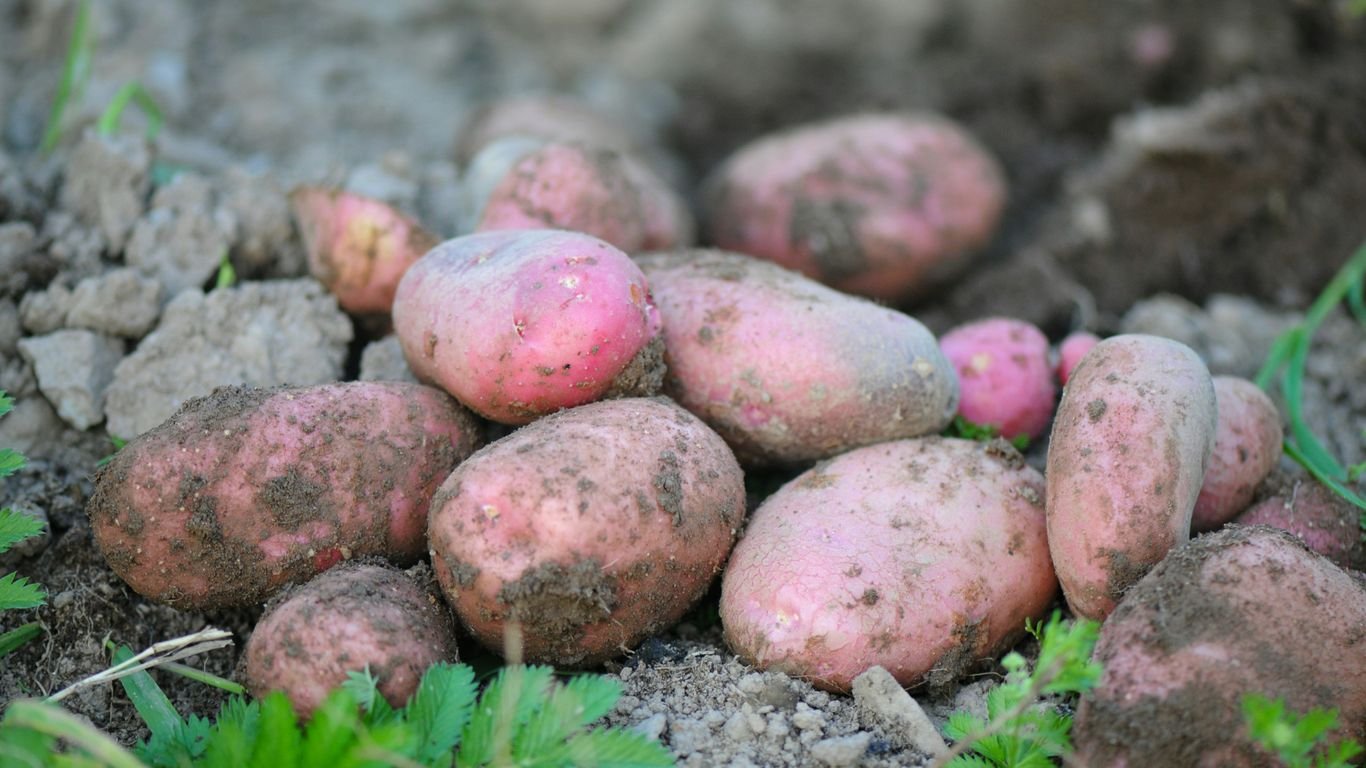Companion Planting for Lettuce: Perfect Partners for Tender Greens

We all love fresh lettuce from the garden, right? It’s so much better than what you get at the store. But lettuce can be a bit finicky – it doesn’t like heat and bugs seem to love it. That’s where companion planting comes in. We’ve found that putting the right plants next to our lettuce makes a huge difference. It’s a simple way to help our greens grow better and stay healthier. Let’s explore some of the best lettuce companion plants that can help your garden thrive.
Key Takeaways
- Companion planting helps protect lettuce from pests and heat, leading to healthier greens.
- Root vegetables like radishes and parsnips can improve soil and grow well with lettuce.
- Herbs such as garlic and onions are great lettuce companion plants because they deter common pests.
- Certain flowers, like marigolds and dianthus, add beauty and can help keep unwanted insects away from your lettuce.
- Avoid planting lettuce too close to brassica family members like broccoli and cabbage, as they compete for the same nutrients.
Why Companion Planting Is A Lettuce Lover’s Dream
We all love that crisp, fresh lettuce straight from the garden, right? It’s so much better than anything from the store. But let’s be honest, lettuce can be a bit fussy. It doesn’t like the heat, and it seems like every bug in the neighborhood has a direct line to our lettuce patch. That’s where companion planting comes in, and honestly, it’s a game-changer for us lettuce lovers.
Boosting Your Greens With Beneficial Buddies
Companion planting is basically about playing matchmaker in the garden. We pair up different plants that help each other out. For lettuce, this means planting things nearby that can offer a little shade when it gets too hot, or attract good bugs that eat the bad ones. It’s a simple way to give our tender greens a better chance to thrive. We’ve found that interplanting lettuce with other crops really helps us rely less on chemical pest control and makes better use of our garden space. It’s all about creating a more sustainable and productive growing environment.
A Natural Defense Against Pests
Lettuce is a magnet for certain pests, and it’s frustrating to see our hard work go to waste. Instead of reaching for sprays, we can use plants to do the defending for us. Some plants naturally repel the pests that love to munch on lettuce leaves. Others attract beneficial insects, like ladybugs or lacewings, which are happy to snack on aphids and other lettuce-loving critters. It’s a win-win: the companion plant gets a neighbor, and our lettuce stays safe. This natural defense system is one of the biggest perks of companion planting.
Enhancing Flavor and Growth
It’s not just about pest control, though. Some plant pairings can actually improve the taste and growth rate of our lettuce. Certain companions can help regulate soil temperature, provide nutrients, or even improve the soil structure. We’ve noticed that when lettuce is planted with the right buddies, it seems to grow faster and taste even better. It’s amazing how these plant relationships can lead to a more bountiful and delicious harvest. We’re always looking for ways to make our garden produce the best possible results, and companion planting is a big part of that strategy for our leafy greens.
The Best Lettuce Companion Plants For A Thriving Patch

When we’re planning out our garden beds, we always think about what plants will get along best. It’s like throwing a party for our veggies! Lettuce, bless its tender heart, can be a bit fussy. It doesn’t love intense heat and can be a magnet for all sorts of garden pests. That’s where picking the right neighbors comes in. Choosing smart companions is our secret weapon for a happy, healthy lettuce patch.
Root Vegetables That Play Well With Lettuce
Root veggies are fantastic partners for our leafy greens. They tend to grow downwards, taking up space and nutrients below the soil surface, which means they’re not directly competing with the lettuce leaves above. Plus, some of them can even help break up the soil, making it easier for our lettuce roots to spread out.
- Carrots: These guys are pretty low-key and don’t demand a lot from the soil. They can even help aerate the soil as they grow.
- Radishes: We love radishes! They grow super fast and can act as a trap crop for flea beetles, drawing them away from the lettuce. Plus, they help loosen the soil.
- Beets: Beets are generally good neighbors, but we need to be a little careful. While they don’t compete much for nutrients, planting them too close might not be ideal for everyone. We usually give them a bit of space.
Herbs That Offer Protection and Flavor
Herbs are like the bodyguards of the garden. Many of them have strong scents that can confuse or repel common lettuce pests, like aphids and cabbage worms. Plus, who doesn’t love having fresh herbs right next to their salad greens?
- Mint: This one is a powerhouse for repelling pests, but be warned – it can spread like wildfire! We usually plant it in pots sunk into the ground to keep it contained.
- Chives and Onions: Their oniony smell is a great deterrent for aphids and other little critters. They also help improve the soil.
- Dill: Dill attracts beneficial insects like ladybugs and lacewings, which are natural predators of aphids.
Fruiting Plants That Support Leafy Greens
While it might seem a bit unusual, some fruiting plants can actually be great companions for lettuce. They often have different growing habits and needs, which means less competition.
- Strawberries: These sweet little plants can provide a bit of ground cover, helping to keep the soil cool and moist for the lettuce. They also don’t compete heavily for nutrients.
- Bush Beans: Beans fix nitrogen in the soil, which is a nutrient that lettuce loves. Just make sure they aren’t the pole variety, as those can get a bit too tall and shady.
We’ve found that mixing different types of plants together creates a more resilient garden. When we have a variety of plants, it’s less likely that a single pest or disease will wipe out our entire crop. It’s all about creating a balanced ecosystem right in our backyard.
Here’s a quick rundown of some top picks:
| Companion Plant | Benefits for Lettuce |
|---|---|
| Radishes | Pest deterrence, soil aeration |
| Carrots | Minimal competition, soil improvement |
| Chives | Pest repellent, soil health |
| Strawberries | Soil moisture retention, shade |
| Dill | Attracts beneficial insects |
Friends In The Garden: What To Plant Next To Lettuce
When we’re planning out our garden beds, thinking about what goes next to our lettuce is a big deal. It’s not just about filling space; it’s about creating a little ecosystem where everything helps everything else out. We’ve found that some plants are just natural buddies for our tender greens, offering protection, improving the soil, or even making our lettuce taste better. It’s all part of the fun of companion planting, really.
Garlic and Onions: Pest Repelling Powerhouses
We absolutely love tucking plants from the onion family, or alliums, near our lettuce. Think garlic, chives, leeks, and of course, regular onions. These guys have a strong scent that seems to confuse and deter all sorts of pests that would otherwise be eyeing our lettuce leaves. It’s like having tiny, natural security guards scattered throughout the garden. We often plant chives in the corners of our raised beds because they’re so easy to grow and keep coming back year after year. They don’t take up much space and offer a lot of protection for such a small plant.
Radishes: Tenderizing Your Greens
This might sound a little odd, but radishes can actually be great neighbors for lettuce. For starters, they have different root depths – lettuce has shallow roots, while radishes go a bit deeper, so they aren’t competing for the same resources underground. Plus, some gardeners swear that radishes help to loosen and tenderize the soil as they grow, which can only be a good thing for our leafy greens. We also find that radishes grow pretty quickly, so we can harvest them before the lettuce gets too big, making good use of the space.
Strawberries: A Supportive Neighbor
We’ve had a lot of success planting strawberries alongside lettuce. They actually have pretty similar needs when it comes to water, soil, and nutrients, so they grow well together without one overpowering the other. Another cool benefit we’ve noticed is that the lettuce leaves can sometimes act as a bit of a disguise for ripe strawberries, hiding them from birds and other critters that might want to snack on them before we do. It’s a win-win situation for everyone involved, especially us!
Companion planting isn’t just about keeping pests away; it’s about creating a balanced garden where plants support each other’s growth. Thinking about root depth, nutrient needs, and even scent can help us make better planting choices for a healthier harvest.
Flowers That Make Great Lettuce Companions
We often think about planting other vegetables or herbs alongside our lettuce, but let’s not forget about the pretty flowers! Adding blooms to your lettuce patch isn’t just for looks; some flowers can actually help keep pests away and make your greens happier. It’s a win-win, really – a more attractive garden that also happens to be healthier.
Dianthus: Beauty and Protection
Dianthus, with its delicate, often ruffled petals, can be a lovely addition to your lettuce beds. These low-maintenance flowers thrive in cooler weather, just like our lettuce. Planting dianthus nearby can act as a natural deterrent for certain garden nuisances. Their presence can confuse pests looking for a leafy meal, making it harder for them to find our tender lettuce. Plus, they add a splash of color that just brightens up the whole garden.
Marigolds: Guarding Against Unwanted Guests
Marigolds are practically famous in the gardening world for their pest-repelling abilities. We’ve found that planting marigolds around the edges of our lettuce beds can make a big difference. Their roots release a substance that can deter nematodes in the soil, and their strong scent is thought to confuse or repel other common garden pests like aphids and certain beetles. It’s like having tiny, colorful bodyguards for our lettuce! We usually plant them a little distance away, so they don’t cast too much shade, but close enough to offer their protective benefits.
Understanding Which Plants To Keep Away From Lettuce
The Brassica Family’s Nutrient Competition
While we love to mix and match plants in our gardens, not every neighbor is a good fit for lettuce. Some plants, especially those in the Brassica family, can actually hinder your lettuce’s growth. We’re talking about broccoli, cauliflower, kale, and cabbage here. These guys are pretty heavy feeders, meaning they really suck up a lot of nutrients from the soil. When they’re planted too close to your delicate lettuce, they can outcompete them for those vital resources. This can lead to stunted lettuce growth or even prevent germination altogether. It’s like trying to have a quiet conversation in a room with a loud band playing – one is going to drown out the other.
Plants That Don’t Play Nicely Together
Beyond the Brassicas, there are a few other combinations we should steer clear of. For instance, planting beans and beets near your lettuce might sound like a good idea, but they don’t always play well together. It’s a bit of a gardening mystery why some plants just don’t get along, but we’ve seen it happen. It’s best to keep these pairings separate to give your lettuce the best chance to thrive.
Here’s a quick rundown of some plants we generally avoid planting right next to lettuce:
- Brassicas: Broccoli, cauliflower, kale, cabbage
- Certain Root Vegetables: While carrots are great, some deeper-rooting vegetables might compete.
- Fennel: This herb can stunt the growth of many garden plants, including lettuce.
Remember, the goal is to create a harmonious garden ecosystem where each plant can flourish. Sometimes, that means giving certain plants their own space.
It’s always a good idea to do a little research on specific varieties, as needs can vary slightly. But as a general rule, giving your lettuce some space from these particular garden dwellers will help ensure a bountiful and healthy harvest for us.
Chicory And Endive: Different Needs, Different Friends
Medium Feeders Need Different Companions
When we talk about lettuce, we often lump a lot of leafy greens together. But here’s a little secret: chicory and endive, while looking a bit like lettuce, have different needs. Unlike many common lettuces that are pretty low-maintenance when it comes to nutrients, chicory and endive are what we call medium feeders. This means they’ll take a bit more from the soil. So, the usual lettuce companions might not be the best fit for these guys.
Planting For Tender, Yellowed Hearts
Chicory and endive are usually planted later in the summer, often between June and August. They like a sunny spot with soil that’s loose and has some good organic matter. Because they’re medium feeders, they appreciate being planted near plants that can handle a bit more nutrient competition, or even better, plants that are heavy feeders themselves. This way, everyone gets what they need without one plant hogging all the resources. It’s all about finding that garden balance, you know?
Here’s a quick look at some good and not-so-good neighbors for chicory and endive:
- Good Companions:
- Potatoes
- Celery
- Artichokes
- Parsley
- Radishes
- Lettuce (yes, some lettuces can still work!)
- Plants to Avoid:
- While not explicitly listed as bad, avoid planting them too close to other heavy feeders that might compete too aggressively for nutrients.
Remember, chicory varieties like Sugar Loaf and Radicchio need a bit more space, usually around 30×30 cm, while chicory itself can grow more narrowly, needing about 10×30 cm. Endive plants can be spaced about 30×25 cm apart. Planting them a little closer together can actually encourage those lovely yellow hearts to form, making them extra tender and delicious.
Finding the right partners for your chicory and endive is key to a successful harvest. It’s a bit like choosing friends – you want those who complement each other. For more on how different plants can help each other out, check out this info on companion planting.
Wrapping It Up
So there you have it! We’ve looked at how planting the right things next to our lettuce can really make a difference. It’s not just about having a pretty garden, though that’s a nice bonus. We can actually help our lettuce grow better, keep pests away, and get more food from our little plots. Remember, not every plant plays nice with every other plant, so a little planning goes a long way. But with a bit of thought, we can create a garden where everything works together, giving us the best possible harvest of those crisp, fresh greens we love so much. Happy planting!
Frequently Asked Questions
Why should we bother planting different things next to our lettuce?
Planting certain things next to our lettuce can be a real game-changer! Some plants help keep the pesky bugs away, like aphids, which love to munch on our greens. Others can actually make our lettuce taste even better or grow bigger and stronger. It’s like giving our lettuce a team of helpful friends in the garden!
What are some of the best plant pals for lettuce?
We’ve found that root veggies like radishes and carrots are great neighbors because they don’t fight for the same food in the soil. Herbs such as garlic and onions are fantastic because they send pests running! Even some flowers like marigolds can act as garden guards. We also love planting strawberries nearby; they seem to get along just fine and help make the garden more diverse.
Are there any plants we should keep far away from our lettuce?
Yes, there are a few! Plants in the cabbage family, like broccoli and kale, can be a bit greedy. They need a lot of the same nutrients, especially nitrogen, that lettuce also craves. This can lead to a nutrient tug-of-war, making both plants grow slower. It’s usually best to give them some space or be prepared to add extra food to the soil.
Does planting flowers next to lettuce actually help?
Absolutely! Flowers like marigolds are super helpful because they can actually scare away bugs that might want to harm our lettuce. Dianthus flowers, besides looking pretty, can also act as ‘interruptors,’ breaking up large patches of lettuce and confusing pests. It’s a win-win: beauty and protection!
What about chicory and endive? Are they like regular lettuce?
Chicory and endive are cousins to regular lettuce, but they’re a bit hungrier! They need more nutrients from the soil than most lettuces. So, while they still appreciate good neighbors, their ‘friends’ might be different. We often plant them a little closer together to encourage their hearts to turn yellow and become extra tender.
How can companion planting help our garden overall?
Companion planting isn’t just about helping lettuce; it makes our whole garden healthier and more productive. By attracting good bugs, repelling bad ones, and making sure plants aren’t competing too much, we end up with more veggies and fewer problems. Plus, a garden with a variety of plants and flowers looks amazing!






